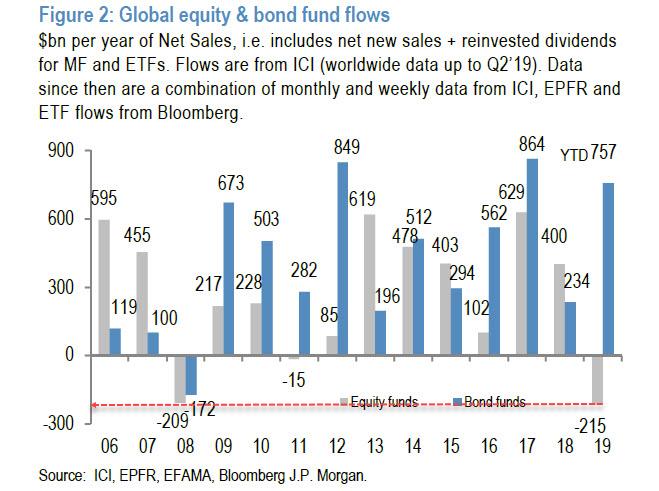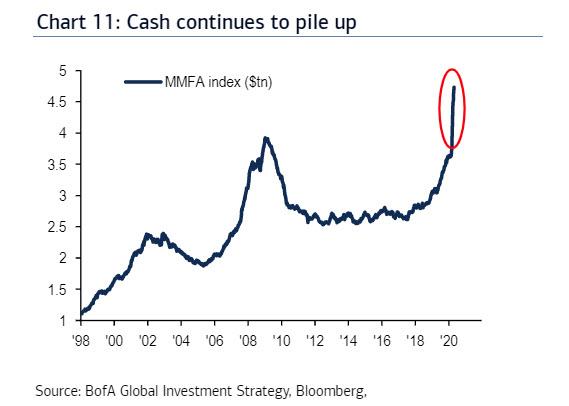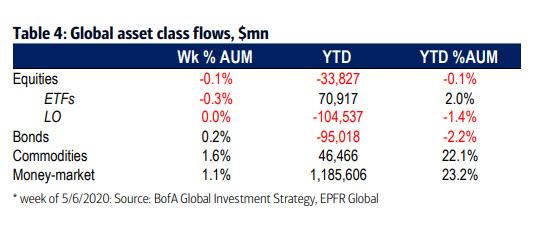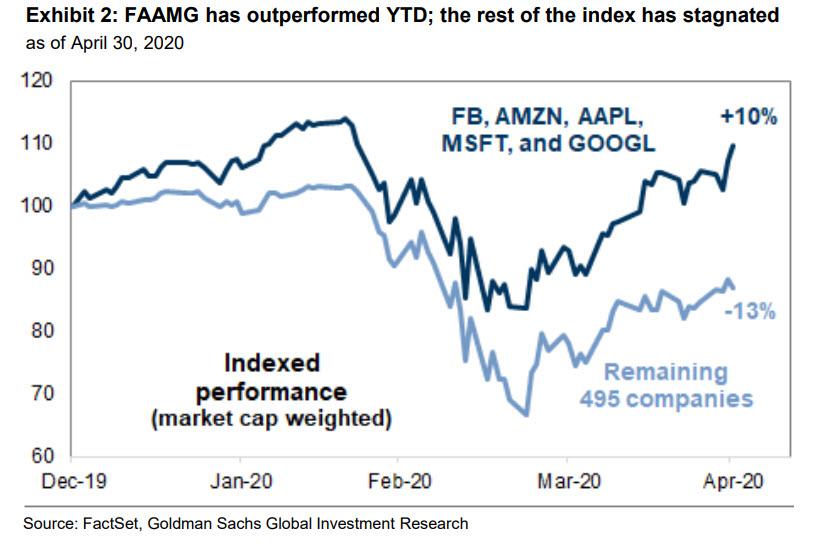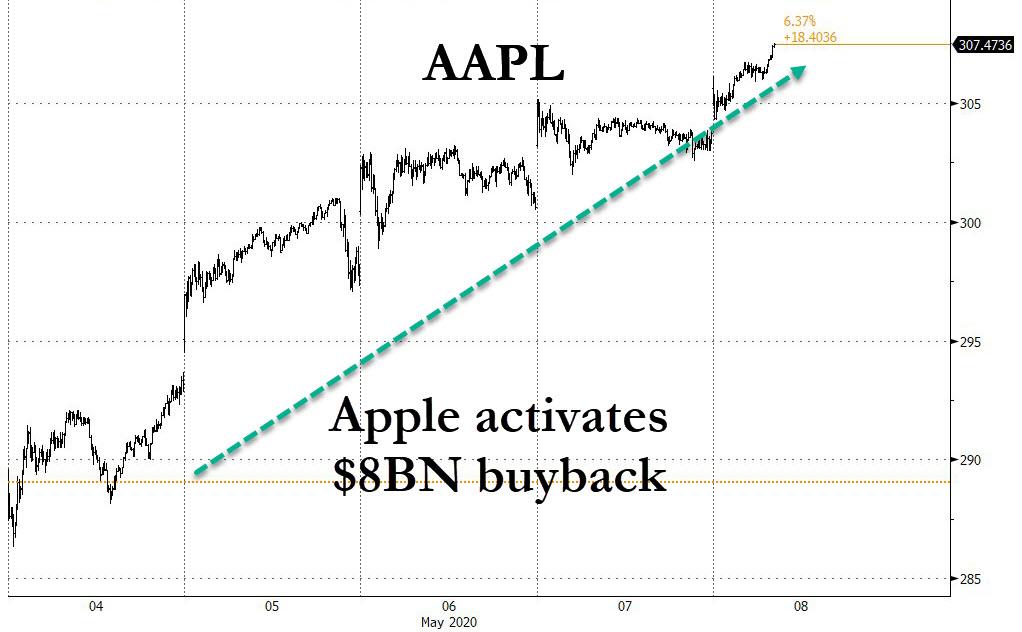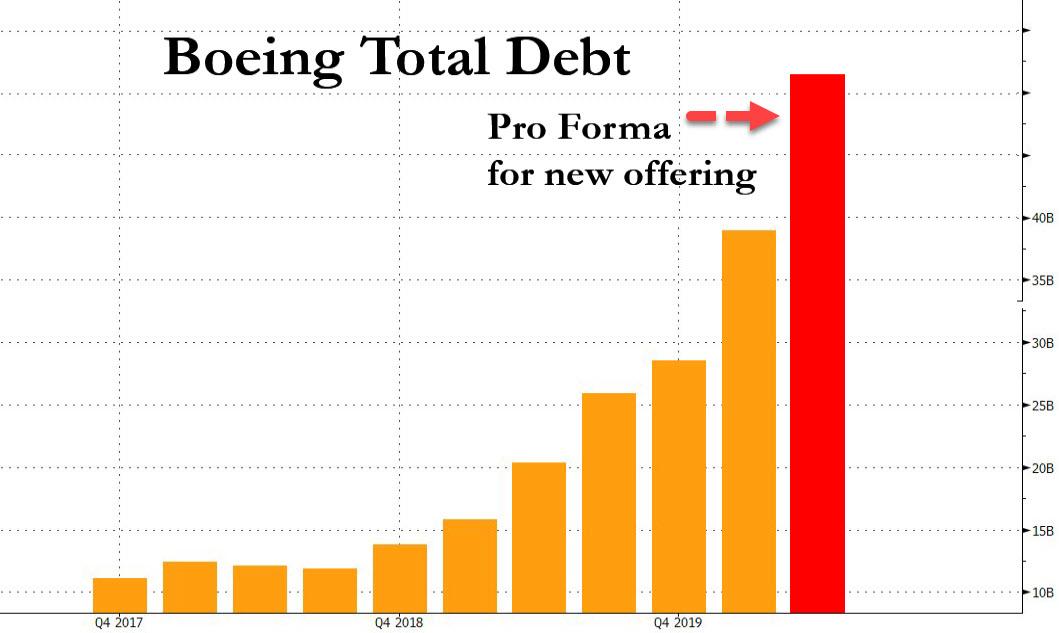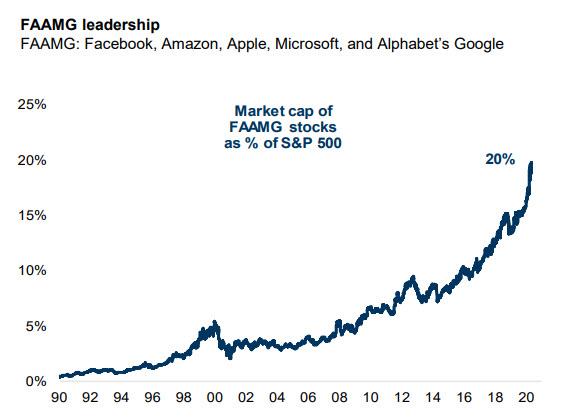Buybacks Are Back: Stocks Soar Even Equity Outflows Hit Two Month High
Back in 2019 we posted on several occasions that a “conundrum” had emerged in the stock market: with equities hitting new all time highs, especially in the last quarter after the Fed relaunched QE to bailout a bunch of basis trading hedge funds under the pretext of saving the repo market, equity outflows soared to all time highs…
… as investors fled risk assets realizing that the market was unsustainable high and artificially propped up by the Fed (as a reminder 2019 saw zero earnings growth and all the equity upside was thanks to multiple expansion).
Fast forward to today when the “conundrum” is back, and as BofA reports today citing the latest EPFR numbers, in the last week investors again fled into cash, allocating $53.5BN to money markets which has pushed money market fund assets by a record $1.2tn in the past 14 weeks to an all time high $4.8tn…
… and while investors have also rushed to allocate fund to “risk free” bonds, now that the Fed is set to begin buying bond ETFs and issues in the second market, resulting in an $11.3BN inflow into bond funds last week including a record $32BN allocated to HY bonds over the past 6 weeks, what is remarkable is that while the S&P soared again in the past week, now trading just 80 points away from 3,000, investors sold again, and in the last week alone they dumped $16.2 billion in outflows – selling both ETFs ($13.8BN) and mutual funds ($2.5BN) – of which $9.3 billion was in US stocks – the largest outflow in 6 weeks since the March crash.
It wasn’t just US stocks: investors also sold Japanese stocks, sold European stocks for the 4th consecutive week ($1.9BN last week alone), and dumped $4.5 billion in emerging market stocks, the 12th consecutive week of outflows.
Drilling down into flows by style, reveals inflows in US growth ($2.4bn); outflows US small cap ($1.4bn), US value ($5.2bn), US large cap ($9.4bn). And here is by sector: inflows hcare ($2.2bn), consumer ($0.6bn), energy ($0.2bn), utils ($0.3bn), com svcs ($0.1bn); outflows materials ($15mn), tech ($43mn), financials ($46mn), real estate ($0.8bn).
A quick tangent: as we noted last week, it’s not the entire market that is surging: it is mostly the Big 5 “FAAMG” tech names which now comprise a record 20% of the S&P500’s market cap, and which are up 10% in 2020 while the remaining 495 S&P stocks are down 13%.
And yet, this week’s continued surge in tech is also paradoxical, because as Hartnett notes, Tech fatigue is setting in with “the first week of tech outflows this year ($43MM).” That, however, did not stop the NASDAQ from turning green on the year this week.
So what’s going on? The answer is well-known. While most companies in the S&P – including all banks – have frozen shareholder distributions as they go into cash conservation mode, the techs continue to actively engage in buybacks, with AAPL on Monday issuing $8BN in bonds which are already being used to repurchase stock. The result: AAPL stock is up 5% since it re-activated its buyback…
… and with AAPL leading the Nasdaq, and the broader market, the S&P is now back to its post-crisis highs.
And in case there is still confusion how to explain the “conundrum” of investors selling yet stocks rising, here is what SocGen said last November: “the answer to this conundrum can partly be found in the reduced trading volume on the US equity market and the massive wave of buybacks over the past two years.”
The irony, of course, is that the coronacrash has taught us absolutely nothing: massively levered companies like Boeing which were on the cusp of collapse have merely papered over their liquidity needs, by issuing even more debt (last week Boeing sold a –), this time with the direct backstop of the Fed…
… while those companies that still can repurchase their shares are doing just that, and using generous creditors to put a bid in stocks just as they did for much of 2019. Which names are those? Why the FAAMGs of course, the companies which repurchased tens of billions in shares in exchange for selling tens of billions in debt. This cycle will continue until i) either the FAAMGs join the rest of corporate America in being massively engorged with debt and can’t find willing buyers for more debt used to repurchase shares or ii) the FAAMGs become too big and force a regulatory intervention to break up their monopolies.
Unfortunately now that the Fed is explicitly backstopping these 5 market leaders, it is impossible to guess when either of those two will happen.
Tyler Durden
Fri, 05/08/2020 – 12:28
